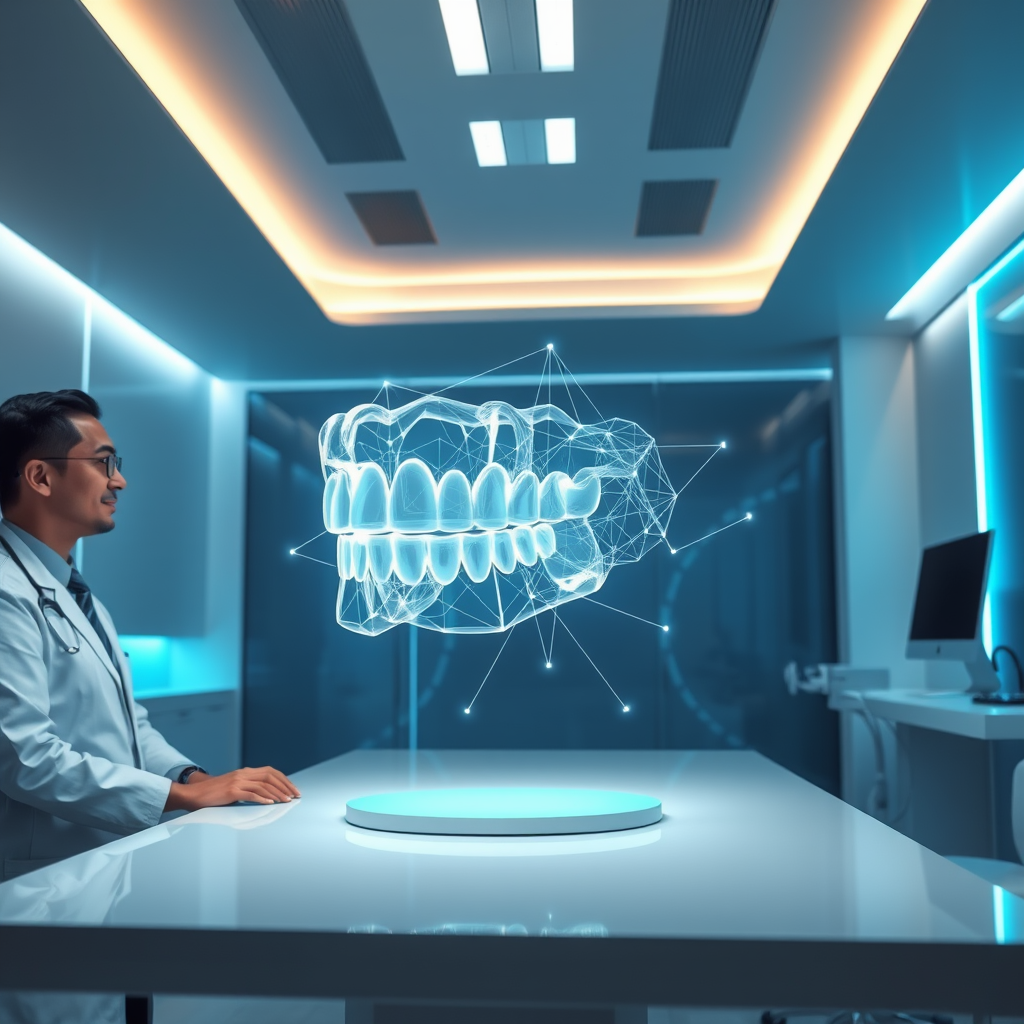
Introduction
In the rapidly evolving landscape of dental technology, the integration of artificial intelligence into everyday clinical workflows is no longer a futuristic concept—it is a present reality. Align Technology, the company behind the world‑renowned Invisalign system, has taken a significant step forward by launching ClinCheck Live Plan, an AI‑powered feature that automates the creation of an initial Invisalign treatment plan. This development promises to streamline the orthodontic planning process, reduce the time clinicians spend on manual adjustments, and potentially increase the precision of treatment outcomes. The announcement comes at a time when many dental practices are grappling with the challenge of balancing high patient expectations with efficient, data‑driven care. By leveraging machine learning algorithms trained on vast datasets of patient scans and treatment results, ClinCheck Live Plan offers a compelling solution that aligns with the broader trend of digitization in oral health.
The Invisalign system itself has long been celebrated for its ability to provide clear, removable aligners that gradually shift teeth into alignment. However, the planning phase—where a dentist or orthodontist designs the sequence of aligners—has traditionally required a blend of clinical expertise and manual manipulation of digital models. ClinCheck Live Plan seeks to transform this phase into a more automated, evidence‑based process. By integrating with Align’s existing suite of tools, including exocad CAD/CAM software and iTero intra‑oral scanners, the new feature promises a seamless workflow that can be adopted by both seasoned practitioners and newcomers to the Invisalign platform.
The implications of this AI‑driven approach extend beyond mere convenience. For patients, a more accurate initial plan can translate into shorter treatment times, fewer appointments, and a higher likelihood of achieving the desired occlusion. For clinicians, the ability to generate a reliable baseline plan quickly frees up valuable time for patient interaction, case refinement, and the exploration of complex orthodontic scenarios that might otherwise be too time‑consuming. In the sections that follow, we will delve into the technical underpinnings of ClinCheck Live Plan, examine its practical benefits and potential limitations, and consider how this innovation fits into the larger narrative of AI in dental care.
Main Content
The Technology Behind ClinCheck Live Plan
At its core, ClinCheck Live Plan is built on a sophisticated machine learning framework that processes 3D intra‑oral scans to predict optimal tooth movement trajectories. The system ingests data from the iTero scanner—a device that captures high‑resolution, color‑accurate images of the patient’s dentition—and feeds it into a neural network that has been trained on thousands of previously successful Invisalign cases. This training set includes variables such as tooth type, arch shape, crowding severity, and patient age, allowing the algorithm to learn patterns that correlate with successful outcomes.
Once the scan is uploaded, the AI performs a rapid analysis of the current occlusion and identifies the most efficient sequence of aligner adjustments needed to achieve the target alignment. Unlike traditional ClinCheck, which requires manual input of desired tooth movements, ClinCheck Live Plan generates a preliminary treatment plan automatically. The algorithm then presents this plan to the clinician, who can review, tweak, or approve it as needed. The integration with exocad CAD/CAM software ensures that the aligner designs are translated into precise manufacturing instructions, while the Invisalign system’s own fabrication pipeline produces the physical aligners.
This seamless chain—from scan to plan to production—minimizes the potential for human error and reduces the time lag between diagnosis and treatment initiation. In practice, a clinician who might have spent an hour or more crafting a manual ClinCheck can now receive a ready‑made plan in minutes, allowing for a more efficient use of clinic resources.
Practical Benefits for Clinicians and Patients
One of the most compelling advantages of ClinCheck Live Plan is the reduction in planning time. In a typical orthodontic practice, the planning phase can consume a significant portion of a clinician’s schedule, especially when dealing with complex cases that require multiple aligner sets. By automating the initial plan, ClinCheck Live Plan frees up clinicians to focus on patient communication, case refinement, and the management of unforeseen complications.
From a patient perspective, the AI‑generated plan can lead to more predictable treatment trajectories. Because the algorithm is trained on a large dataset of successful cases, it can identify subtle nuances—such as the optimal tipping or torque of specific teeth—that might be overlooked in a manual plan. This can result in fewer treatment adjustments, fewer aligner sets, and ultimately a shorter overall treatment duration. For patients who are often concerned about the time commitment required for orthodontic care, these efficiencies can be a decisive factor in choosing Invisalign over traditional braces.
Moreover, the integration of AI into the planning process can enhance the educational experience for dental students and residents. By observing how the algorithm arrives at a particular tooth movement strategy, trainees can gain insights into evidence‑based orthodontic principles that might otherwise be learned through trial and error.
Addressing Concerns: Data Privacy, Bias, and Human Oversight
While the benefits are clear, the introduction of AI into clinical decision‑making inevitably raises questions about data privacy, algorithmic bias, and the role of the clinician. Align Technology has taken steps to ensure that patient data is encrypted and stored in compliance with HIPAA and GDPR regulations. However, practitioners must remain vigilant about how patient information is handled, especially when data is transmitted to cloud‑based services.
Algorithmic bias is another area of concern. If the training dataset is not sufficiently diverse—representing a broad range of ethnicities, age groups, and dental anatomies—the AI may produce suboptimal plans for underrepresented populations. Align’s commitment to continually updating its training data and incorporating feedback from clinicians worldwide is essential to mitigating this risk.
Finally, the human element cannot be entirely replaced by AI. ClinCheck Live Plan is designed as a decision support tool rather than a decision‑making authority. The clinician retains ultimate responsibility for approving the final treatment plan, ensuring that clinical judgment, patient preferences, and contextual factors are all considered. This hybrid approach preserves the artistry of orthodontics while harnessing the analytical power of machine learning.
Future Outlook: AI’s Expanding Role in Dental Care
ClinCheck Live Plan represents a significant milestone, but it is also a stepping stone toward a broader AI ecosystem in dentistry. Future iterations may incorporate predictive analytics that estimate treatment duration, cost, and potential complications before the first aligner is even fabricated. Integration with electronic health records could allow for real‑time monitoring of patient progress, enabling proactive adjustments and personalized care plans.
Beyond orthodontics, AI is already making inroads into restorative dentistry, periodontics, and oral surgery. From automated caries detection in radiographs to robotic-assisted implant placement, the possibilities are vast. ClinCheck Live Plan exemplifies how AI can be seamlessly woven into existing workflows, enhancing both efficiency and quality of care.
Conclusion
ClinCheck Live Plan marks a pivotal moment in the convergence of artificial intelligence and dental practice. By automating the initial Invisalign treatment plan, Align Technology offers clinicians a tool that saves time, reduces the potential for human error, and provides patients with a more predictable treatment journey. While the integration of AI brings challenges—particularly around data privacy, bias, and the need for human oversight—these can be addressed through robust safeguards and continuous refinement of the underlying algorithms.
Ultimately, the success of ClinCheck Live Plan will hinge on its ability to complement, rather than replace, the clinical expertise that has long been the cornerstone of orthodontic care. As more practitioners adopt this technology, the dental community stands to benefit from faster, more accurate treatments that elevate patient satisfaction and clinical outcomes.
Call to Action
If you are a dental professional eager to explore the next frontier of orthodontic planning, consider integrating ClinCheck Live Plan into your practice. Reach out to Align Technology for a demonstration, and discover how AI can streamline your workflow, enhance treatment precision, and ultimately deliver better results for your patients. For patients, stay informed about the evolving technologies that can shorten treatment times and improve comfort—ask your orthodontist about AI‑powered planning options today.


